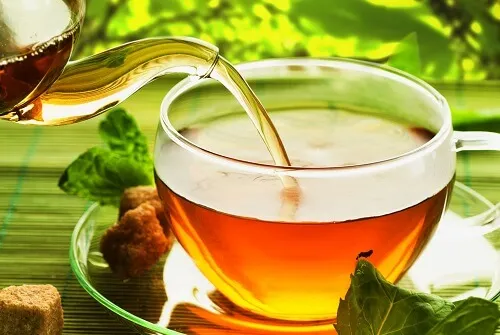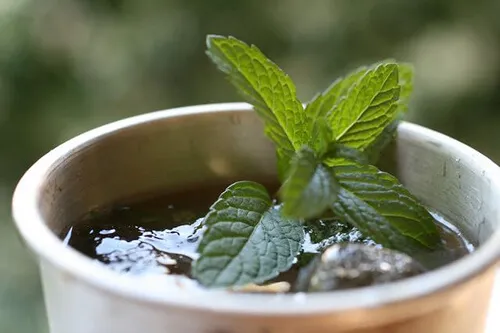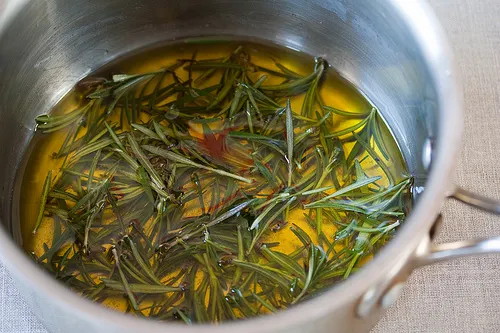Tea and Infusions: What Each is Used For
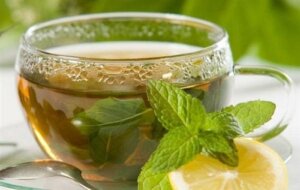
You may consume tea and infusions every day, but you probably don’t know the great variety that you have at your disposal or what their properties are. In the following article, you’ll find a complete guide with most of the teas and infusions and what each of them is used for.
Never miss out on them in your kitchen!
Tea and infusions: The types and properties of tea
Green tea
This is a natural medicine that’s considered the healthiest tea. It’s also the one that provides more advantages than any other kind of tea (especially if it’s fermented). It preserves its components almost the same as when it’s in its natural environment, in fields.
Among the main properties of green tea we can highlight that it’s an antioxidant that delays the signs of premature aging. In fact, this is demonstrated by this article published in the European Journal of Clinical Nutrition.
It’s also a depurative tea that eliminates fluids that accumulate in the body and is digestive as well as a fat burner that helps to lose weight, as pointed out in this study in the American Journal of Physiology: Regulatory, Integrative and Comparative Physiology.
It’s rich in vitamins A, B and C, fluoride, sodium, and minerals. It strengthens the immune system and allows the body to protect itself from infections or viruses.
Since green tea has a low theine content, it should be prepared with water before boiling. Otherwise, the leaves will cook and the taste will be more bitter. The Chinese were the first to discover this wonderful tea and it’s drunk the most in Japan today. The difference between the two is the brewing process.
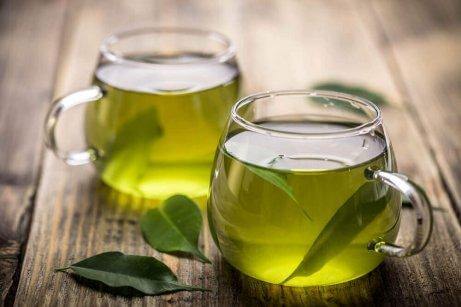
Black tea
The second of the teas and infusions that we’ll bring you is the most popular in Western culture. It’s consumed in bags, but also as leaves. Its flavor and properties make it a wonderful drink.
Black tea has a good amount of antioxidants, is satiating, good for the stomach, and low in calories, as shown in this research by the Chilean Journal of Nutrition. It wasn’t always used for consumption, but was an economic bargaining chip because it doesn’t lose its flavor over time.
Camellia Sinensis black tea leaves go through an oxidation process to turn from green to black. This type of tea is stimulating due to its amount of theine. The ideal water temperature to enjoy it is 95,° and its intensity will depend on the type or the minutes it’s left submerged in the cup.
Tea and infusions: White tea
This is called ‘the elixir of youth’ because of its wonderful properties. It’s the most refined and exquisite of teas. Instead of the leaves, the smallest and most tender buds are harvested to make this tea. That’s why it’s been said that the person who consumes it is actually drinking the youth of the plant, or its vital energy.
The light color is due to a white hair that covers the leaves when they first emerge and is harvested by hand during a few days in the spring. It’s produced in the high mountains of Fujian, China.
It has a delicious flavor and delicate aroma, provides vitamins C and E, and is also an antioxidant and diuretic. It should be drunk at a temperature of 75°C.
Red tea
This tea is known for its wonderful fat-burning properties. It’s the “tea of the emperors” because for a long time it was forbidden to the lower caste population.
It has a very strong, earthy flavor and is dark reddish in color. The maturation process requires many years. Drinking three cups of this tea a day eliminates fats from the body and reduces cholesterol levels, although there’s no recent scientific evidence on this. The ideal temperature to drink red tea is 95°C.
Blue tea
This is also called “Oolong” or semi-fermented tea. It’s color is somewhere in the middle between green and black. To make this tea, its fermentation process is interrupted and it’s rolled and oxidized up to twenty times. It comes from two regions: Fujian (China) and Formosa (Taiwan).
It has a vegetal flavor like green tea and can be lighter or darker depending on the process used to make it. It’s antioxidant, strengthens the immune system, regulates cholesterol, lowers blood pressure and contains vitamins and minerals. The temperature to drink it is around 90°C, although it can also be “accepted” iced or cold.
Also, in this research published in the International Journal of Obesity, it was shown that it can be a good complement for the treatment of obesity and fatty liver that come from a diet rich in fats.
We think you may also enjoy reading this article: How to Fight Off a Cough with Pepper and Honey Tea
More types of tea and infusions and their properties
Now that you know the main types of tea, it’s time to learn a bit about the most popular infusions that you can enjoy using certain herbs or plants.
Chamomile tea
This is widely used to treat mild digestive disorders, indigestion, colic, diarrhea or gastritis, as shown in this study published in Molecular medicine reports. It’s also useful for eye irritation or inflammation and is used for respiratory conditions such as asthma, cough or cold.
In addition, chamomile tea treats acne, is beneficial for the skin in general, and can help clean superficial wounds.
Peppermint tea
This has antiseptic, antispasmodic and digestive properties, as shown in this article published in the Arabian Journal of Chemistry. It reduces flatulence, repels insects, maintains good breath, and is used for colds and coughs.
Like this article? You may also like to read: How to Use Tea Bags to Improve Circles Under Your Eyes
Linden tea
The medicinal part of linden is in the fruits and flowers. It’s a sedative and is used as a tranquilizer for the nervous system. It improves digestion and helps to sleep better. It can be used to reduce arterial problems, colic, and menstrual cramps.
Valerian tea
This is very similar to linden tea in its sedative and relaxing properties. However, it’s necessary to be careful with the amount consumed because it can cause excessive sedation in the nervous system, lower blood pressure, and slow circulation.
Also, according to various investigations such as this one published in the Revista Colombiana de Psiquiatría, valeriantea is a natural remedy for the treatment of insomnia already used in Ancient Greece. However, these same investigations assure that, at the present time, it’s not approved by the Food and Rug Administration of the United States for the treatment of insomnia.
Green anise tea
The leaves give fresh breath when chewed, it’s expectorant, and a stomach tonic. It can also help to regulate menstrual cycles, relieves flatulence, and aids digestion.
Rosemary infusion
Finally, this infusion has healing properties for the nervous system, strengthens memory, and improves blood circulation. Also, some studies show that rosemary helps to improve liver function.
Don’t hesitate to try these teas and infusions to take advantage of their benefits!
All cited sources were thoroughly reviewed by our team to ensure their quality, reliability, currency, and validity. The bibliography of this article was considered reliable and of academic or scientific accuracy.
- Osakabe, N., Yasuda, A., Natsume, M., Sanbongi, C., Kato, Y., Osawa, T., & Yoshikawa, T. (2002). Rosmarinic acid, a major polyphenolic component of Perilla frutescens, reduces lipopolysaccharide (LPS)-induced liver injury in D-galactosamine (D-GalN)-sensitized mice. Free Radical Biology and Medicine, 33(6), 798-806.
- Ortiz, O. M., Sánchez-Mora, N., Herraez, D. F., & López, C. A. (2008). Valeriana en el tratamiento a largo plazo del insomnio. Revista colombiana de psiquiatría, 37(4), 614-626.
- Singh, R., Shushni, M. A., & Belkheir, A. (2015). Antibacterial and antioxidant activities of Mentha piperita L. Arabian Journal of Chemistry, 8(3), 322-328.
- Srivastava, J. K., Shankar, E., & Gupta, S. (2010). Chamomile: A herbal medicine of the past with a bright future. Molecular medicine reports, 3(6), 895-901.
- Han, L. K., Takaku, T., Li, J., Kimura, Y., & Okuda, H. (1999). Anti-obesity action of oolong tea. International journal of obesity, 23(1), 98.
- Espinosa, C., González-Silvera, D., Pérez-Llamas, F., López-Jiménez, J. Á., & Zamora, S. (2015). Effect of long term intake of white tea on acute oxidative stress in rats. Nutricion hospitalaria, 32(2), 749-756.
- Valenzuela, B. (2004). El consumo té y la salud: Características y propiedades benéficas de esta bebida milenaria. Revista chilena de nutrición, 31(2), 72-82.
- Diepvens, K., Westerterp, K. R., & Westerterp-Plantenga, M. S. (2007). Obesity and thermogenesis related to the consumption of caffeine, ephedrine, capsaicin, and green tea. American journal of physiology-Regulatory, integrative and comparative physiology, 292(1), R77-R85.
- Serafini, M., Ghiselli, A., & Ferro-Luzzi, A. (1996). In vivo antioxidant effect of green and black tea in man. European journal of clinical nutrition, 50(1), 28-32.
This text is provided for informational purposes only and does not replace consultation with a professional. If in doubt, consult your specialist.


